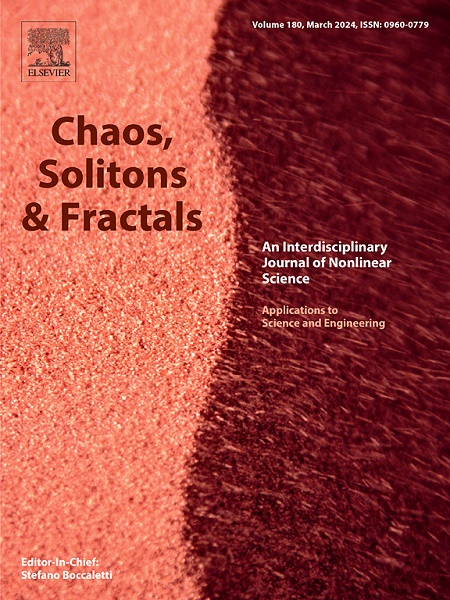都市接触网络中两种相互竞争的传染病的建模
IF 5.6
1区 数学
Q1 MATHEMATICS, INTERDISCIPLINARY APPLICATIONS
引用次数: 0
摘要
传染病很少孤立传播,多种疾病的竞争传播普遍存在。然而,现有的传染病竞争动态研究通常依赖于网络化的人口,缺乏对特定大都市地区的系统研究。本文提出了一个竞争性传染病模型来描述两种竞争性传染病在大都市地区的传播。通过扩展平均场理论,首先建立了该理论的分析框架来表征该高维系统。为了更方便地描述这一扩展过程,我们提出了一种降维方法来降低系统的复杂度。最后,我们使用年龄接触数据驱动的方法来模拟两种相互竞争的传染病在纽约等大都市的传播。结果验证了降维方法的可靠性,使我们能够通过一维方程来描述高维系统。我们观察到两种疾病竞争传播的三种主要情景,即两种疾病都不爆发、一种疾病占主导地位、另一种疾病被抑制、两种疾病在传播过程中共存。此外,我们的模拟表明,工作场所比其他环境更有利于具有更强传播能力的特定疾病。本文章由计算机程序翻译,如有差异,请以英文原文为准。
Modeling two competing infectious diseases in a metropolitan contact network
Infectious diseases rarely spread in isolation, and the competing spreading of multiple diseases widely exists. However, existing studies on the dynamics of competing infectious diseases typically rely on networked populations, lacking systematic research on specific metropolitan areas. This study proposes a competing infectious disease model to describe two competing infectious diseases spreading in metropolitan areas. An analytical framework of the theory is first developed to characterize this high-dimension system though expanded mean-field theory. To describe this spreading process more conveniently, we propose a dimension-reduction method to reduce the system complexity. Finally, we use an age-contact data-driven approach to simulate the spreading of two competing infectious diseases in metropolitan cities like New York. The results validate our dimension-reduction method’s reliability, allowing us to describe the high-dimension system through a one-dimensional equation. We observed three main scenarios of competing disease spreading, i.e., neither disease can break out, one disease dominates, while the other is suppressed, and the two diseases coexist throughout the spreading. Moreover, our simulations show that the workplace favours specific diseases with stronger spreading capabilities than other settings.
求助全文
通过发布文献求助,成功后即可免费获取论文全文。
去求助
来源期刊

Chaos Solitons & Fractals
物理-数学跨学科应用
CiteScore
13.20
自引率
10.30%
发文量
1087
审稿时长
9 months
期刊介绍:
Chaos, Solitons & Fractals strives to establish itself as a premier journal in the interdisciplinary realm of Nonlinear Science, Non-equilibrium, and Complex Phenomena. It welcomes submissions covering a broad spectrum of topics within this field, including dynamics, non-equilibrium processes in physics, chemistry, and geophysics, complex matter and networks, mathematical models, computational biology, applications to quantum and mesoscopic phenomena, fluctuations and random processes, self-organization, and social phenomena.
 求助内容:
求助内容: 应助结果提醒方式:
应助结果提醒方式:


